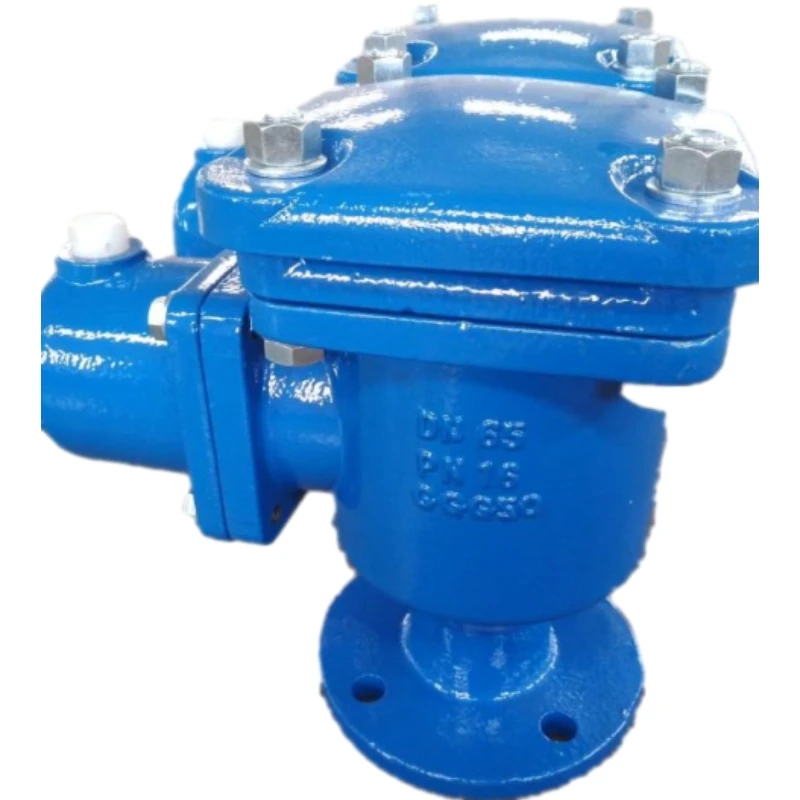double orifice air release valve
Understanding Double Orifice Air Release Valves
Air release valves are essential components in many fluid systems, particularly in water distribution and wastewater management. Among the various types of air release valves, the double orifice air release valve stands out due to its unique design and functionality, which addresses several operational challenges encountered in hydraulic systems. In this article, we delve into the features, advantages, and applications of double orifice air release valves.
What is a Double Orifice Air Release Valve?
A double orifice air release valve is a device designed to eliminate air from pipelines while allowing air to enter when necessary. The term double orifice refers to the valve's two openings that facilitate air flow in both directions. Typically, these valves are characterized by their ability to prevent air pockets from forming in the system, which can lead to inefficiencies, pressure fluctuations, and potential damage to the infrastructure.
The dual orifice design allows for a more controlled release of air. The larger orifice is used for rapid air discharge, while the smaller one aids in absorbing air during low flow conditions. This dual functionality ensures that the valve performs optimally during different operational scenarios.
The Mechanism of Operation
The operation of a double orifice air release valve is driven by the principles of pressure differential. When the system is filled with liquid, the pressure within the pipeline exceeds atmospheric pressure, keeping the valve closed. However, as the liquid flows and creates a vacuum, the valve opens to release trapped air.
In the case of a sudden drop in pressure within the pipeline, or during the refilling of a pipe, the smaller orifice allows for controlled air intake, which can be crucial in preventing water column separation. This feature is particularly important in long pipelines, where air pockets can cause issues such as water hammer, leading to damaging shock waves.
Advantages of Double Orifice Air Release Valves
1. Enhanced Efficiency The dual orifice design enhances the efficiency of air release, minimizing the amount of energy lost during the process. This efficiency translates into better overall performance of the fluid system.
2. Reduced Risk of Air Locks By effectively managing the air within the pipeline, double orifice valves reduce the likelihood of air locks. Air locks can hinder fluid flow and disrupt the normal operation of the system.
double orifice air release valve

3. Positive Pressure Regulation These valves contribute to the regulation of positive pressure within the system, which is crucial in maintaining a consistent flow rate and preventing potential failures.
4. Durability and Reliability Constructed from robust materials, double orifice air release valves are designed to withstand harsh conditions, ensuring longevity and reliability even in demanding environments.
Applications of Double Orifice Air Release Valves
Double orifice air release valves are widely used in various applications, including
- Water Distribution Systems These valves are vital in municipal water supply lines, ensuring that air is efficiently released to maintain the integrity of the infrastructure.
- Wastewater Management In wastewater treatment facilities, managing air within the pipelines is essential for optimal function and to prevent disruptions that could lead to treatment inefficiencies.
- Irrigation Systems Double orifice air release valves are also common in agricultural irrigation systems, where they help maintain the flow of water and prevent air entrapment in the distribution lines.
- Fire Protection Systems In fire sprinkler systems, these valves ensure that air is removed from pipes, allowing water to flow freely when needed while preventing the risk of air locks that could delay response times.
Conclusion
In summary, double orifice air release valves play a critical role in enhancing the performance and reliability of fluid systems. Their innovative design caters to the need for efficient air management, helping to prevent operational issues that could compromise the integrity of pipelines. As water and wastewater management systems continue to evolve, the importance of such valves cannot be overstated; they represent a key technology for ensuring the safe and efficient transport of fluids within various infrastructures. Understanding their functionality and applications is crucial for engineers and operators who strive to maintain optimal system performance in an ever-demanding environment.
-
The Essential Component for Safe Urban InfrastructureNewsMay.14,2025
-
The Backbone of Urban InfrastructureNewsMay.14,2025
-
Practical and Stylish Solutions for Your Drainage NeedsNewsMay.14,2025
-
Lamphole Frame and Cover: Essential for Urban InfrastructureNewsMay.14,2025
-
A Seamless and Aesthetic SolutionNewsMay.14,2025
-
A Must-Have for Safety and DurabilityNewsMay.14,2025
-
Pipe Repair Clamps: Your Ultimate Solution for Efficient RepairsNewsMay.09,2025
